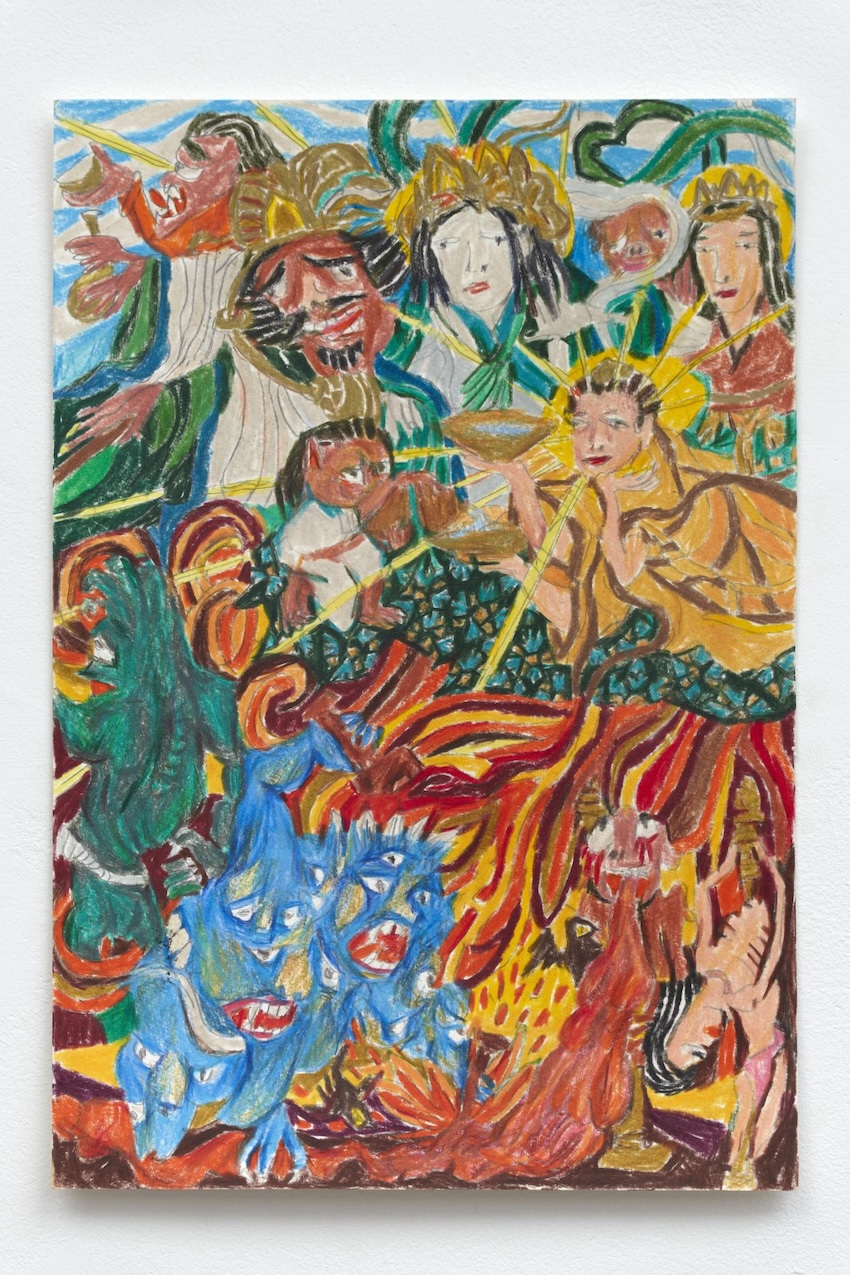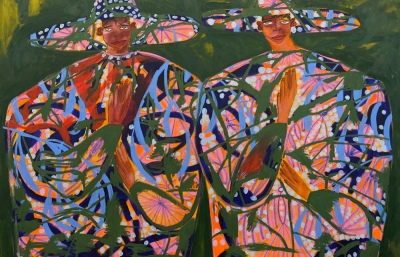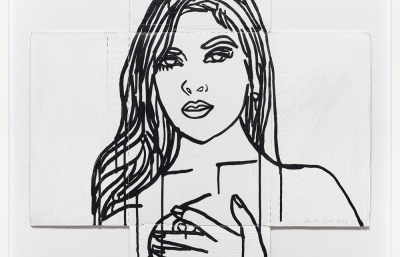56 HENRY is pleased to present Adolescent Sanctuary, an installation by Koichi Sato. Split into two rooms, Sato’s work presents a beautiful, disaffected face in the front room and slowly reveals itself through the interior of a teenager’s bedroom in the back space.
The front is filled with refined and delicate oil portraits. In the typical style of the artist, these works pay special attention to pattern and color, though this time the colors are muted and the patterns subdued. Rolling wide-set eyes and many-fingered hands compound the dreamlike atmosphere of the works. The thin, hazy layers of oil paint make this harem of beautiful and bored women seem to glow. Each with their own name, outfit, and expression, Sato is able to infuse each portrait with a personality that is singular, each one alluring and untouchable in its own way.
Toward the back end of the gallery, Sato’s work departs from the aloofness and ennui of the paintings. Strewn around the room are ceramic sculptures of empty cigarette boxes and opened candy. Drawings and records fabricated by the artist are displayed in the maximalist manner of a teenager’s bedroom. The drawings are bursting with life: visible pencil strokes form the basis of the patterns and subjects, creating movement and organized chaos within them. The records, similarly, reference existing album covers and insert swirls and patterns into negative space.
In the series of drawings, the artist’s references are far flung. A portion of them are covers or famous scenes from nostalgic teenage movies: Empire Records, Star Wars, and Space Jam, for example. Another selection are tableaus of Americana, portraits and moments in time from every era: young women at an intersection filled with recognizable brands and signs, a middle aged man standing near a grand-looking bookshelf, an old-timey country musician. Sato’s drawings and their meticulous attention to detail and pattern present an optimistic reflection on American culture. The final set of works draw from traditional imagery in Japanese folklore. Similar to tapestries and wood block prints common in the Edo Period, dancing skeletons, deities, and beautiful women look on as battles against demons are waged in dense and maze-like compositions.
The artist unites the disparate mediums through a consistent stylistic voice that is equal parts formal and whimsical. Sato’s joyful worldview and reverence for American multiculturalism produce a suite of works that inspire and delight.











